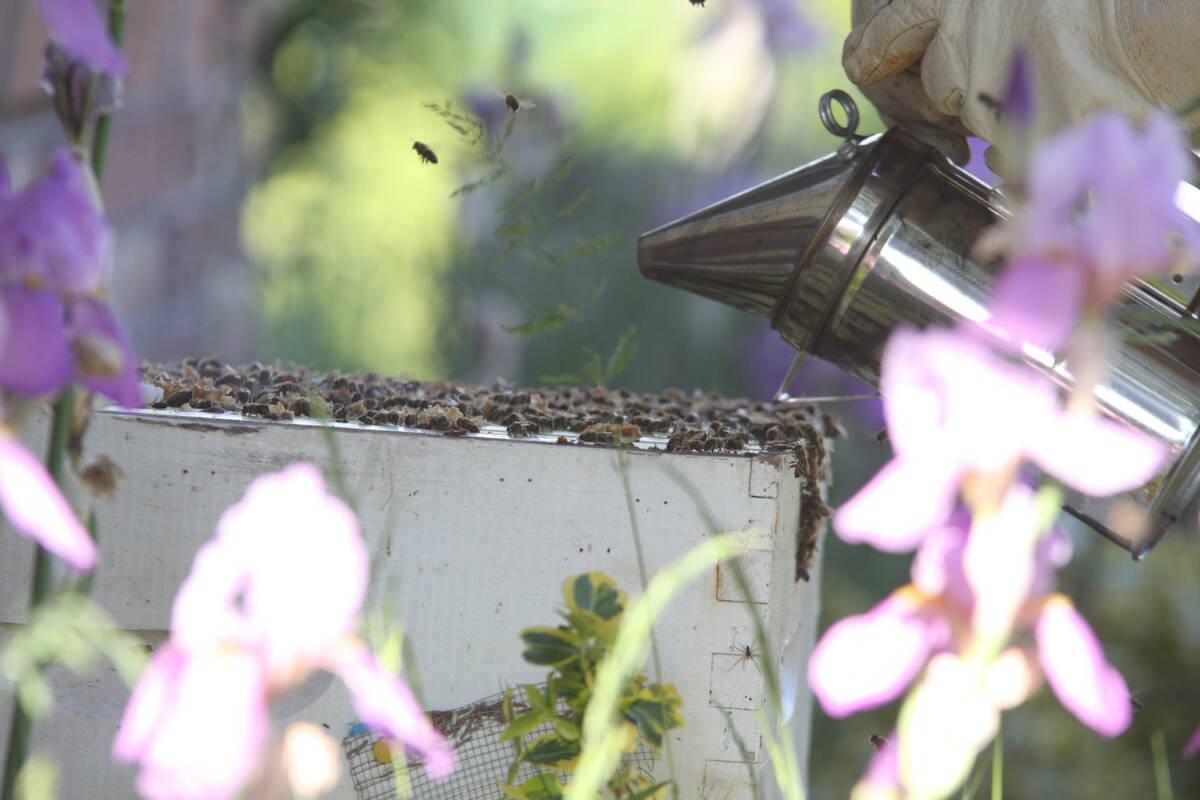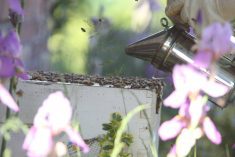SOURIS, Man. – Air seeders are becoming an important tool for the
expansion of sunflower acres in southwestern Manitoba and southeastern
Saskatchewan.
Growers in those areas are planting more acres to sunflowers and other
special crops, but they are not always prepared to invest in expensive
row cropping equipment.
That’s where air seeders enter the picture.
Instead of buying row cropping equipment, a number of sunflower growers
are learning how to adjust and modify their air seeders for sunflower
Read Also

Manitoba beekeepers battle for survival
Honeybee colony losses have hit 43 per cent, making 2025 the latest in a string of poor bee survival years for Manitoba’s honey producers
planting.
“With a lot of tweaking and careful management, they can do it,” said
Manitoba Agriculture oilseeds specialist Rob Park.
Most sunflower acres in North America are seeded in rows. An advantage
of that system is that it allows tillage between the rows during
growing season, providing weed control.
With air seeders, the sunflower crop is solid seeded, so in-row tillage
is not an option during the growing season.
That can make weed control a greater challenge than with row cropping.
However, Park and Mel Reimer, executive director of the National
Sunflower Association of Canada, say the challenge is being overcome.
Growers can harrow the sunflower crop when it is only about 10
centimetres tall. Reimer said that can eliminate a lot of the weeds and
give the crop a competitive advantage early in the growing season.
The other tool, of course, is herbicides.
There are herbicides for in-crop control of grassy type weeds, but
there is still nothing available for broadleaf weeds.
That makes it important for growers to have weeds in check before the
sunflower crop goes into the ground.
“If they didn’t have a weed-free field before planting, they’re going
to have a lot less yield and a lot more weed competition,” Reimer said,
noting that weeds can cut yields in half.
While air seeders may be a good fit for growers wanting to plant
sunflowers without row cropping equipment, Park cautions there is a lot
of learning involved.
Air seeders were designed more for crops such as wheat and canola,
which are planted in much higher seed densities than sunflowers.
The planting density for confection varieties is generally 18,500
sunflower plants per acre. However, seed placement must be precise to
give consistent plant densities, since that will affect time to
maturity and the size of the sunflower heads.
“It’s an art and a skill where growers need to practise a lot,” Park
said. “A lot of problems can arise and a lot of wrecks can happen.”
Besides giving sunflower growers an alternative to buying row cropping
equipment, solid seeding with air seeders might have another advantage.
Reimer said information coming out of the United States is showing a
slightly reduced incidence of sclerotinia in solid seeded sunflower
crops.
“It’s not a huge reduction, but it is noticeable. That may not hold up.
We don’t know yet.”














